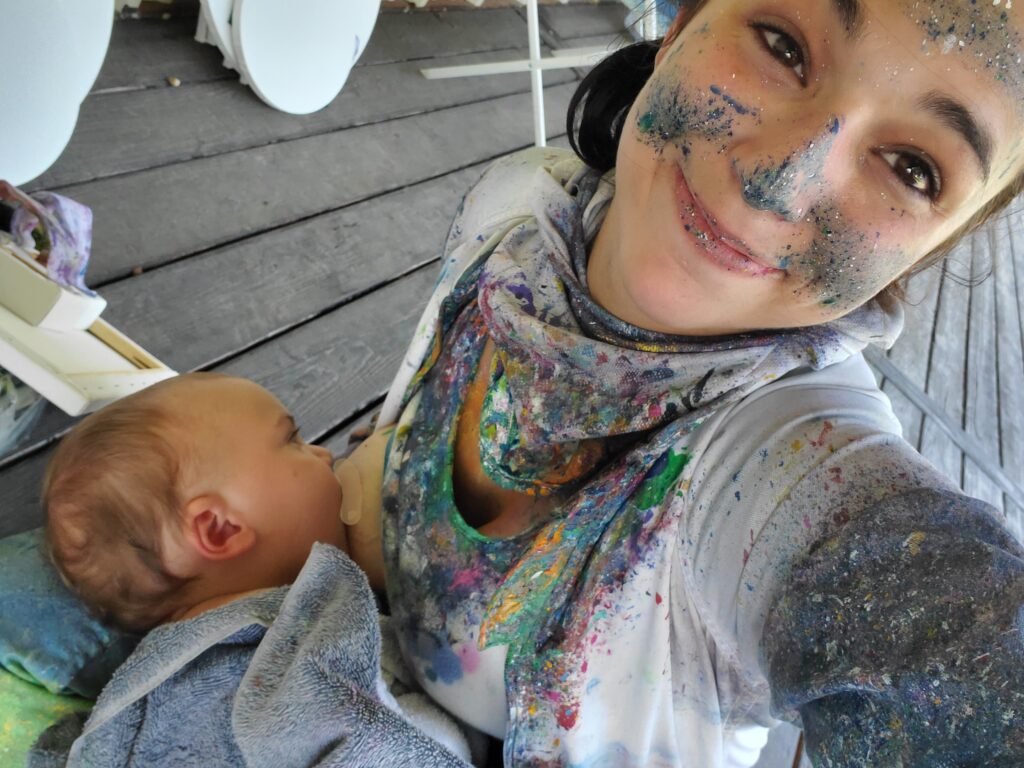
PepsiCo and The Quaker Oats Company made a commitment last June to change the name and image of Aunt Jemima, a logo that has lasted 131 years. On February 9th, these companies moved one step closer to permanently rebranding their line of pancake-mixes and syrups by selecting a new name. Aunt Jemima is now officially called the Pearl Milling Company, inspired by the small business in St. Joseph that pioneered self-rising pancake mix. Whether you like the new logo or not, this situation has demonstrated that consumers are more vocal than ever before. Marketers and advertisers are now facing the difficulties behind revaluating brands and making sure they’re updated to current values. On top of this, the COVID-19 pandemic has made most organizations cautious when they create commercials. Budweiser, Coca-Cola, and Hyundai all made the shocking decision to skip advertising spots in the 55th Super Bowl due to financial concerns. In this new climate, how do advertisers tackle the current pandemic where consumers are noticeably stressed? I reached out to Jordyn Gambrell, a creative director at Fox Court Advertising, to discuss marketing behind this pandemic.
The most recent Super Bowl created many commercials featuring various celebrity endorsements from names like Drake, Bruce Springsteen, and Amy Schumer. What qualities do you think lead to a great celebrity-featured commercial and why was there such a huge reliance on influencers during this year’s Super Bowl with nearly 70 celebrity cameos?
Celebrity cameos can be tricky. When you’re bringing a celebrity into a commercial, you’re bringing in the cultural context surrounding that celebrity as well. In this case, “cultural context” is referring to how the general public perceives this person, what they are known for, and how their personal brand affects whatever brand the commercial is for. For example, Morgan Freeman narrating a commercial makes sense because he’s so well known for his voice. He is a celebrity with a broad-reaching mass appeal. He is easily recognized and well-liked across multiple demographics.
Having a celebrity in an ad can be a great thing but, it can also fail spectacularly. The ad needs to be carefully crafted or it runs the risk of feeling lazy or worse, unironically cringeworthy. If you’re going to do a great celebrity cameo, you need to consider the following:
- What demographic does your celebrity appeal to and does this align with your brand’s target audience?
- What do people think of when they see this celebrity? (This can vary greatly across demographics)
- Is this celebrity making this commercial any better than it would be with a regular actor?
- How can you organically incorporate the social context associated with a celebrity into your ad?
Uber Eats executed this in a fun way with their Wayne’s World spot. It made fun of the celebrity cameo concept and tied it back to the brand in an interesting way. In my opinion, these are the best celebrity cameos because they’re breaking the fourth wall in a sense. It doesn’t take itself too seriously and good-naturedly acknowledges how the audience feels.
The sheer volume of celebrity cameos was an interesting choice because there was some public distaste regarding celebrities in 2020. Several celebrities were criticized for being insensitive or irresponsible because of the content they were posting during the pandemic. Many showed themselves traveling, attending large gatherings, and not social distancing properly. On the other hand, we saw much more personal content from celebrities and influencers during quarantine as people turned to social media more than ever for entertainment and human connection. Brands likely believed this to be the type of content their audiences wanted during this time.
A survey by Food Processing reported that 65% of white respondents over the age of 65 believed brands expressing views on social issues were just trying to exploit them. How do organizations, like the Quaker Oats Company, support philanthropic issues while also appearing genuine and not commoditizing sensitive topics?
In many cases, the way you feel about something is going to shape your perception of it. This is a demographic that didn’t grow up in a culture that’s prioritizing diversity and inclusivity the way we are today. They might not feel favorably toward brands taking a stance on social issues but, everyone isn’t part of a brand’s target audience. We need to ask, “Is a brand being ‘inauthentic’ and saying whatever they think will play to public appeal, or are they just saying things that don’t play to your appeal when you’re used to that being the case?” Furthermore, “Are you upset that a brand is ‘pandering’ or are they simply saying something that you don’t want to hear?”
The reality is that companies want to stay relevant and make a profit. Advertising agencies help brands connect with their audiences in culturally relevant ways. Because of this, it can seem like brands are trying to exploit social issues to make themselves look good. However, it’s important to remember that behind every single Ad are strategists, creatives, and entire teams that are creating the Ads we see. We’re seeing agencies that are actively trying to recruit diverse talent. Diverse agencies create diverse perspectives.
The reality is that when an ad is performative, it’s fairly obvious because it lacks the nuance that would naturally emerge if someone directly impacted was involved. The best Ads that address social issues have people who genuinely care about those issues behind them. These ads are often reinforced by transparent action initiatives that involve the people the brand is trying to help and directly benefit the cause.
There was mixed reviews on the new Pearl Milling Company name and logo. What was your review of the transformation and does a brand need to focus more on adapting to new eras or sticking to its founding principles?
Brands need to adapt to new eras while taking responsibility for their pasts. With authenticity must also come accountability. When evaluating moves like this, consider two main questions:
1. Under what circumstances was this rebrand done?
2. What was the impact/what was accomplished?
This was done during protests about police brutality and the humanity of Black people. While many brands were speaking out about the BLM movement and systemic racism, it wasn’t a conversation that every brand needed to be a part of.
The entire rebrand felt performative. Rebranding does nothing to make up for the harm caused to the family of the woman they exploited. They profited off of her image without compensating her or her relatives even though they easily could have done so. Even if it wasn’t easy to do so, it would have been the ethical course of action – a course they chose not to take.
Pearl Milling Company doesn’t seem to be regarded more favorably than it was before because people weren’t thinking about it as a brand until the announcement. The previous branding wasn’t an active pain point for the Black community and the rebrand announcement distracted people from the matters at hand. That was not the time to be debating syrup and rice. Is the history important? Absolutely. But the rebrand didn’t contribute in any meaningful way to the issues that prompted it in the first place. It garnered a lot of attention during a very difficult time and ultimately felt like a hollow gesture.
Smartly.io interviewed 5000 consumers and noticed that two-thirds of interviewees wanted brands to share relevant messaging towards COVID-19 or use their platform to help impacted communities. It appears that a lot of commercials during 2020 actually focused more on light-hearted topics rather than serious messaging. Is there a reason why a company would avoid a topic like this pandemic and is there any commercials that you thought addressed COVID-19 well?
COVID-19 and 2020 as a whole have been deeply traumatic for many people. Tackling the realities of adapting to a new way of life that has challenged and changed us on a global scale is a bit easier to process when met with humor. It’s a way to express the pain and frustration while reminding each other that we aren’t so alone in this, even if quarantine has caused many to feel that way. One brand that took this approach and pulled it off was Bud Light with their seltzer lemonade commercial.
Commercials take a lot of time to plan and produce. Addressing something on social media is easy, television is less so. I wouldn’t be surprised if we saw a few more ads addressing COVID-19 in 2021 because there has been adequate time to prepare them. Another reason we likely haven’t seen many brands address COVID-19 in commercials is that it became a much politicized topic. Creating a commercial around COVID-19 is a very expensive risk to take. When brands ignore what’s going on in the world, it can come across as being out of touch, but it can also help them avoid criticism. It will be interesting to see if more brands take on that challenge this year.
With 315 million downloads in the first quarter of 2020, Tiktok became the most downloaded mobile app ever. Instagram has noticed a 76% increase in likes on sponsored content and other apps have reported similar patterns. With desktop and mobile consumption up, how do advertisements change and is there any key differences between posting an ad on Instagram versus a billboard?
Genuinely engaging with and entertaining people can create a major impact. This is especially true during a time in which people are seeking human connection, while avoiding the health risks associated with direct human contact. Sponsored content is likely also increasing because the public’s tolerance for blatant ads is decreasing. Pushing a product can feel intrusive or annoying. However, entertaining someone is going to be much better accepted because it’s providing a form of value to the person engaging with it. While Instagram and billboard ads are typically going to be quite different on a structural level, there is one major similarity. You have a very short amount of time to capture someone’s attention. I’d say the biggest difference between posting an ad on Instagram as opposed to a billboard is accessibility. You have to be physically present to see a billboard. On billboards, the brevity is largely due to safety because many people are going to see them while driving or walking.

